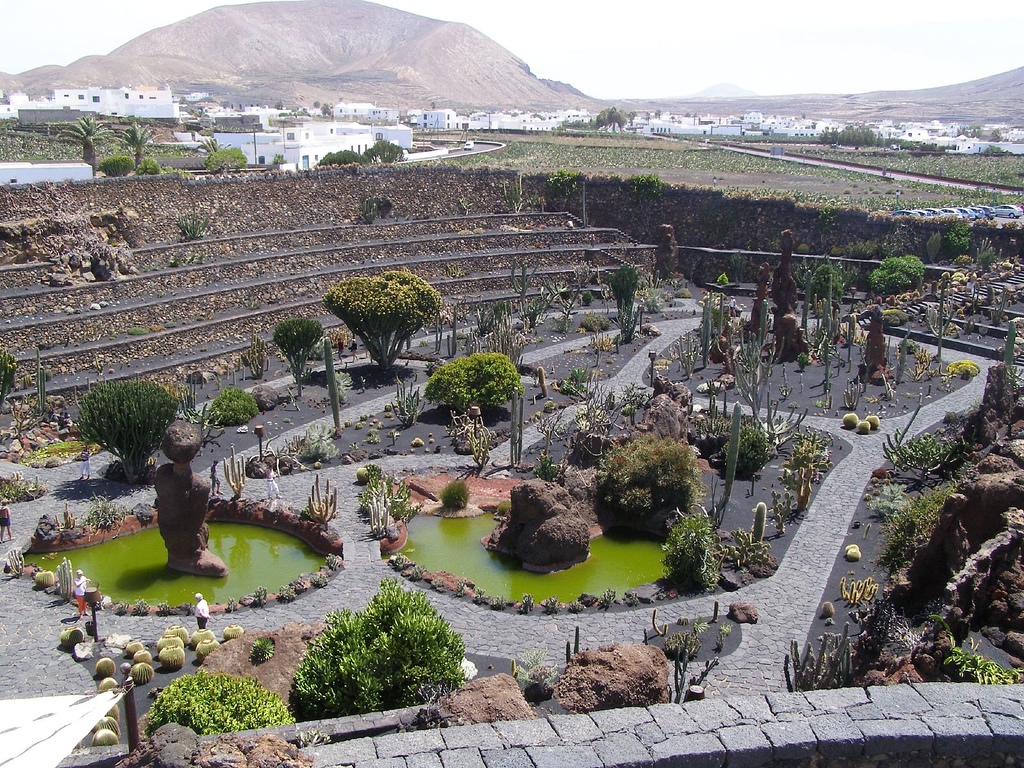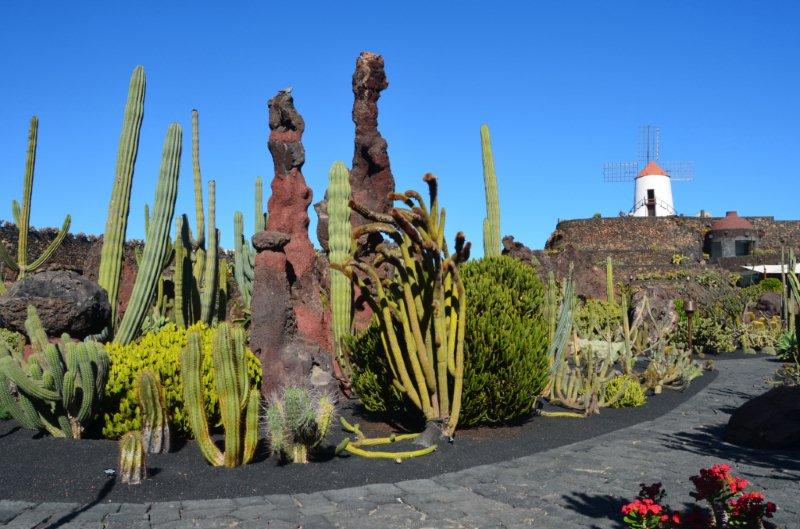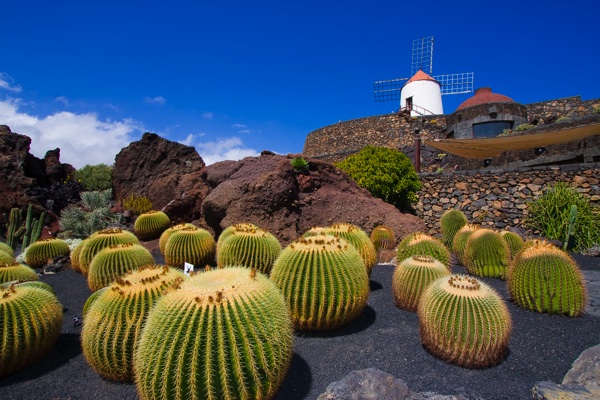
The origins of the Jardín de Cactus date back to the 1970s, when César Manrique - then in full creative dialogue with the island's landscape - turned his attention to the old quarry at Guatiza.The former quarry was used for the extraction of volcanic ash and rock once used by prickly pear growers to conserve the ground’s nighttime moisture. The artist César Manrique saw in this location the chance to convert a disused area into an unusual and beautiful work of art.


The depression in the ground produced by the continual extraction of gravel had transformed the quarry into a dump. The artist encouraged the Cabildo de Lanzarote - a body with which he was working very closely - to acquire the land, wall in the complex and restore the traditional windmill that crowned the enclave. However, owing to various viscitudes, the original project to build a new Centre of Art, Culture and Tourism would have to wait until the 1980s. The Jardín de Cactus was finally opened in 1990 and became César Manrique's final spatial work.


The Jardín de Cactus is a magnificent example of an architectonic intervention integrated into the landscape. César Manrique created this audacious architectonic complex whilst maintaining the unshakeable pairing of art and nature that is so tangible in all of his spatial interventions.
It is located in Guatiza, municipality of Teguise, in the middle of an agricultural landscape characterised by extensive tunera plantations dedicated to the cultivation of cochineal.
The selection of this special landscape, as with so many of Manrique's works, dictated the aesthetic solutions adopted as well as the contents of the same, which have a sense of continuity and integration with the surrounding landscape. The large metal cactus at the entrance and the wrought iron gate stand out as unique referential and emblematic elements that presage the majestic and surprising character of the interior.
The entrance is formed by a labyrinthine set of robust, curved volumes, placed around a central structure in the form of a 'taro', the virtue of which is to occlude the view of the interior and therefore provoke a surprise effect on visitors.
On crossing the threshold, we are met with a view over the whole enclave. One of the main characteristics of this recreated amphitheatre is the walls, made up of terraces descending from the ground, in levels displaying different varieties of cactus.

A double staircase opens at our feet, inviting us to walk the sinuous stone paths and flights of stairs that connect the various landscaped areas in the interior.
At centre stage, we can see a series of monoliths made of compacted volcanic ash which have remained intact as evidence of the quarry's past extraction activities. The marked sculptural nature of these monoliths harmonises with the capricious, original shapes of the cacti. As an idyllic counterpoint to the aridity of the landscape, there are small ponds complete with water lilies and colourful fish.
In the Centre's five thousand square metres, there are over seven thousand two hundred examples of over one thousand one hundred different species, originating from places as far afield as Peru, Mexico, Chile, the United States, Kenya, Tanzania, Madagascar, Morocco and the Canary Islands. It is worth noting that the botanical collection at the Jardín de Cactus continues to increase, with periodic plantings of new species.